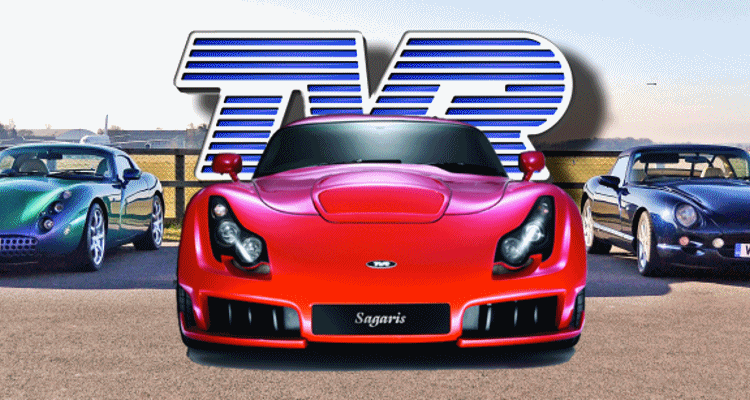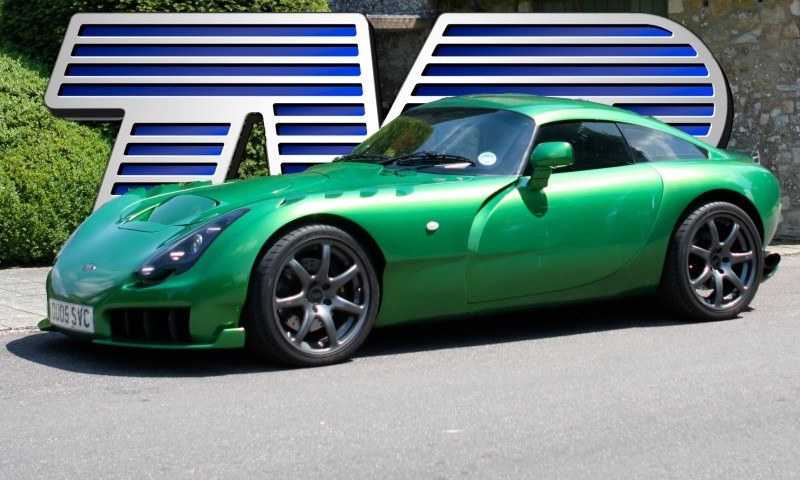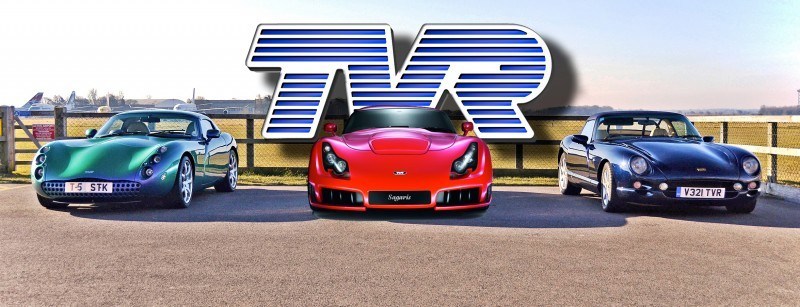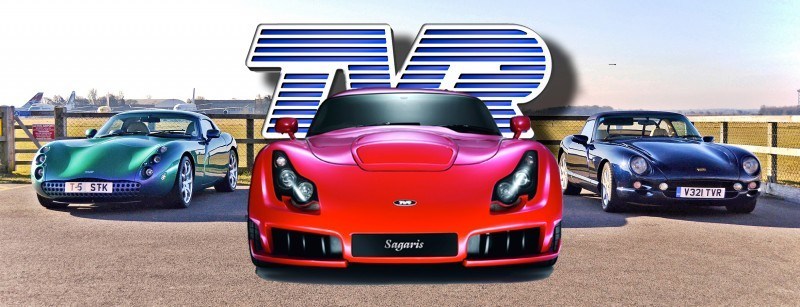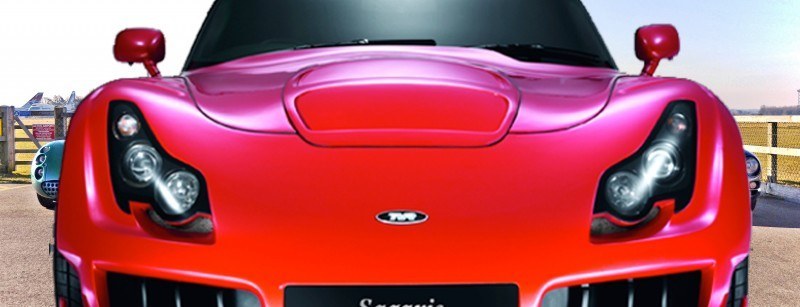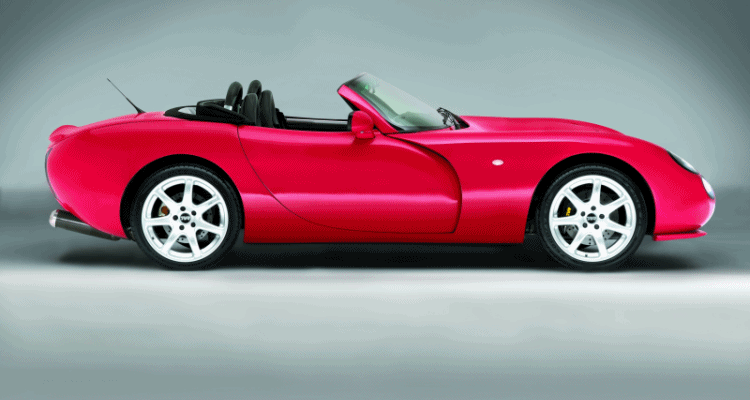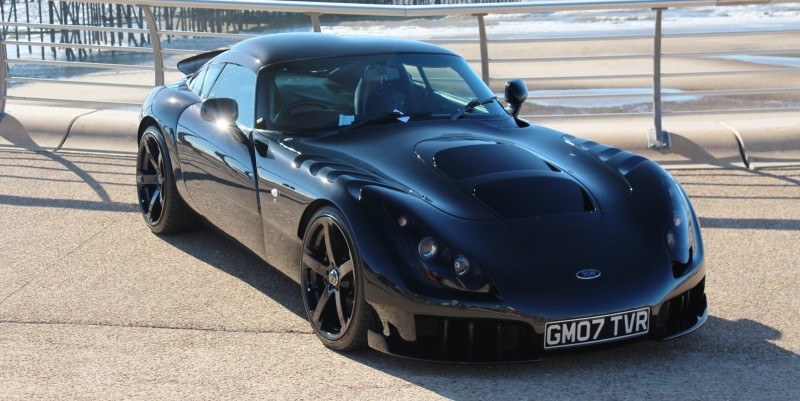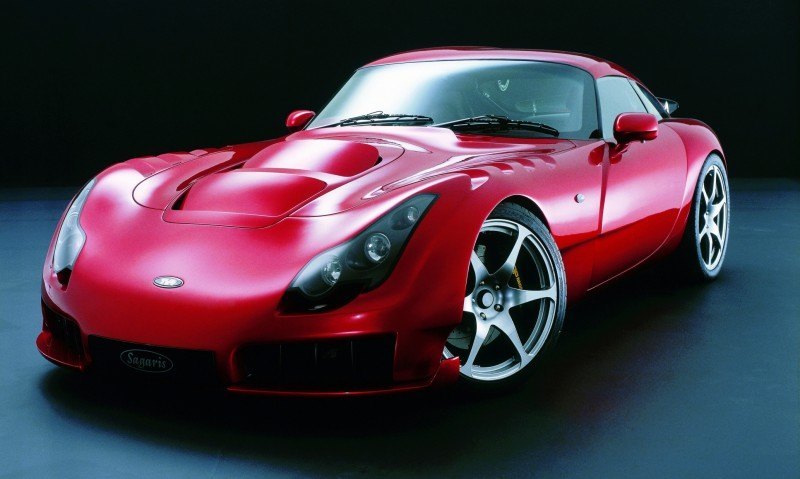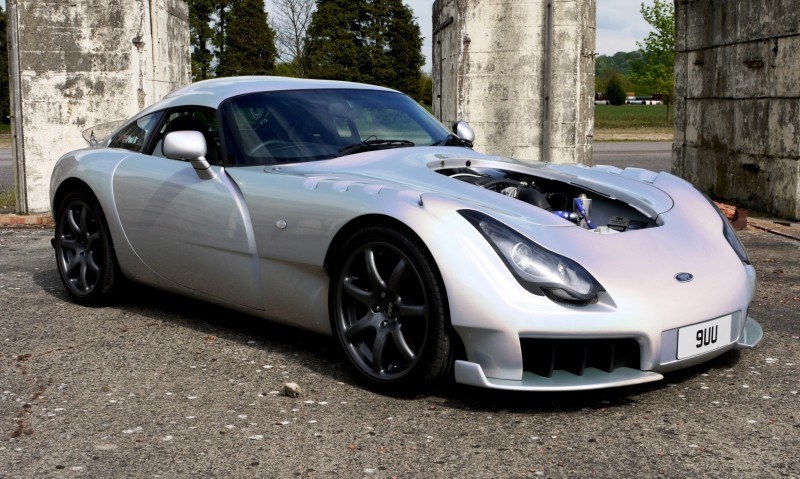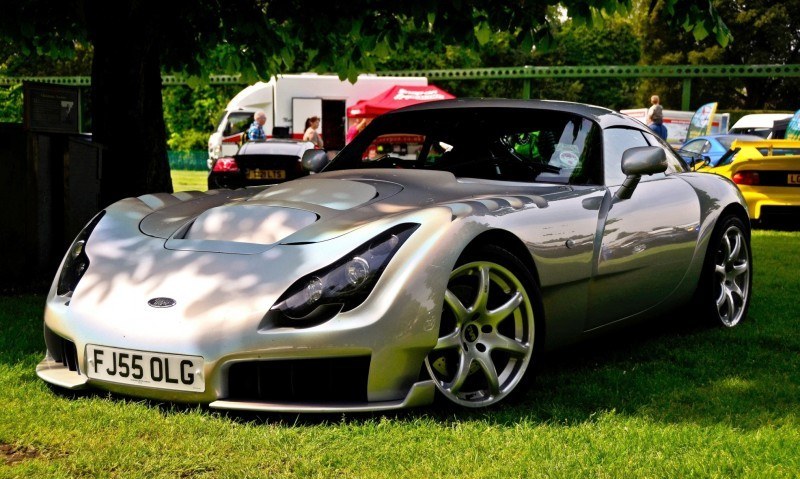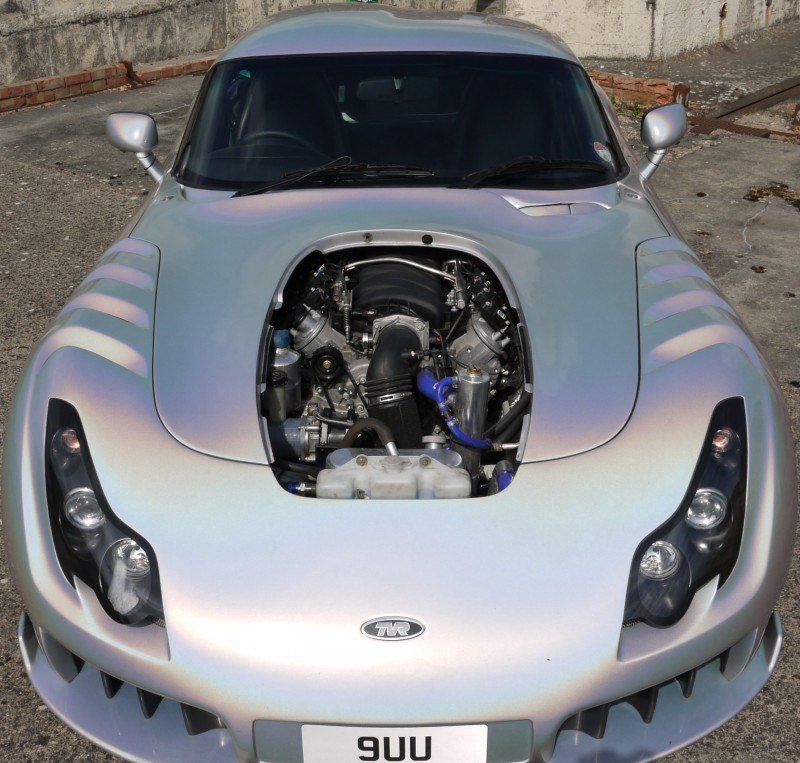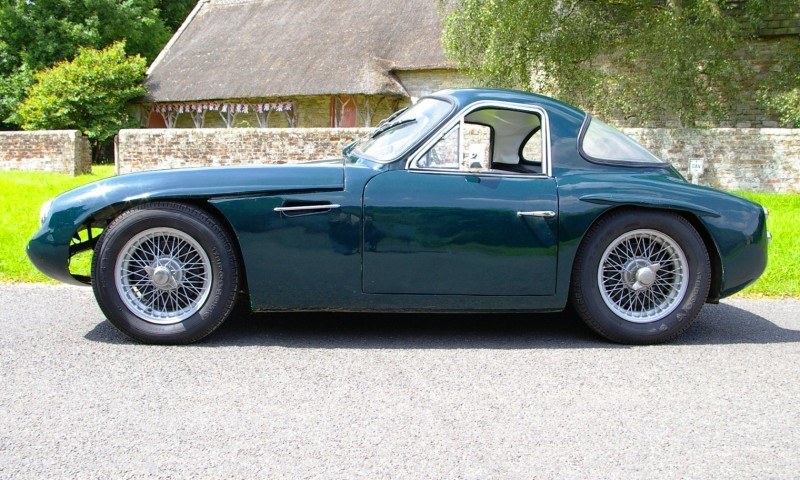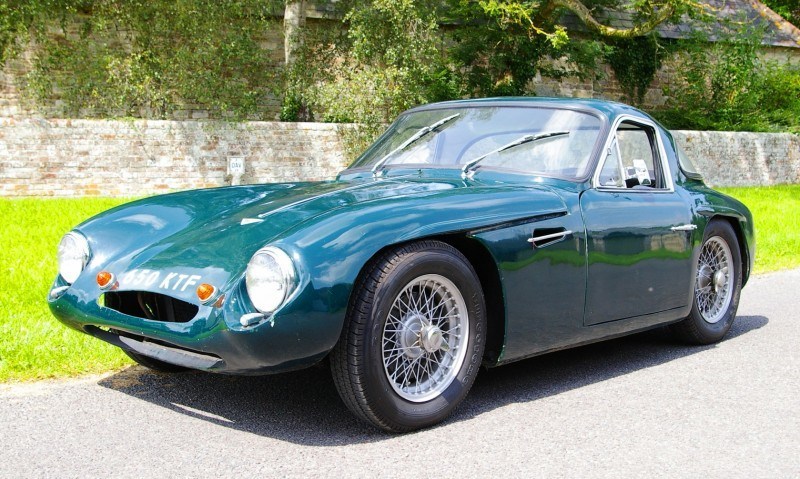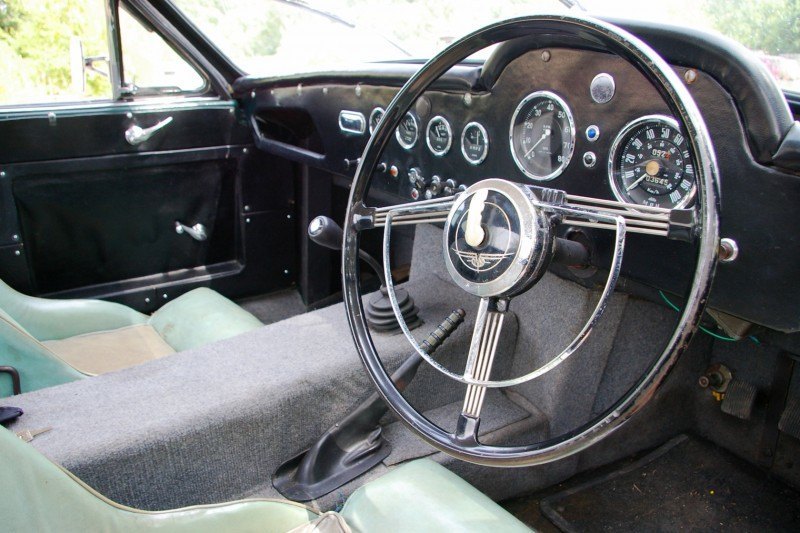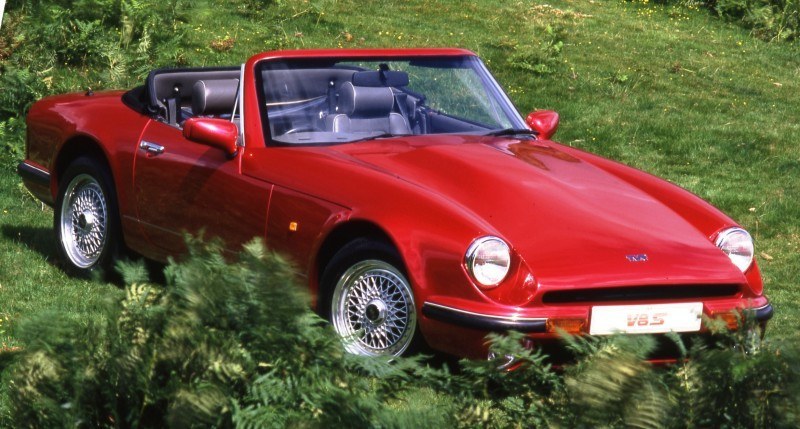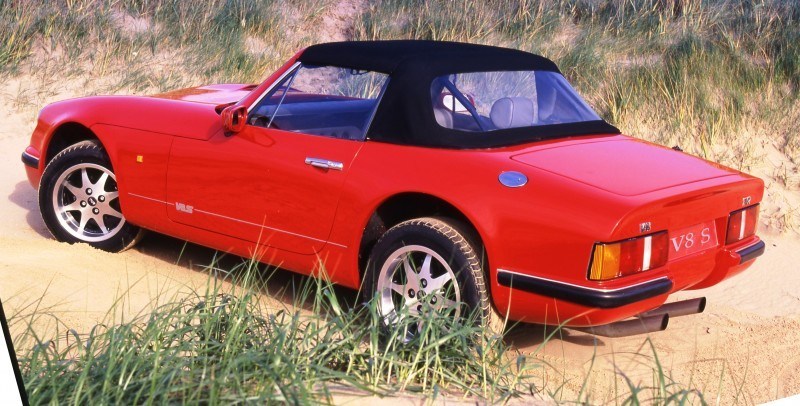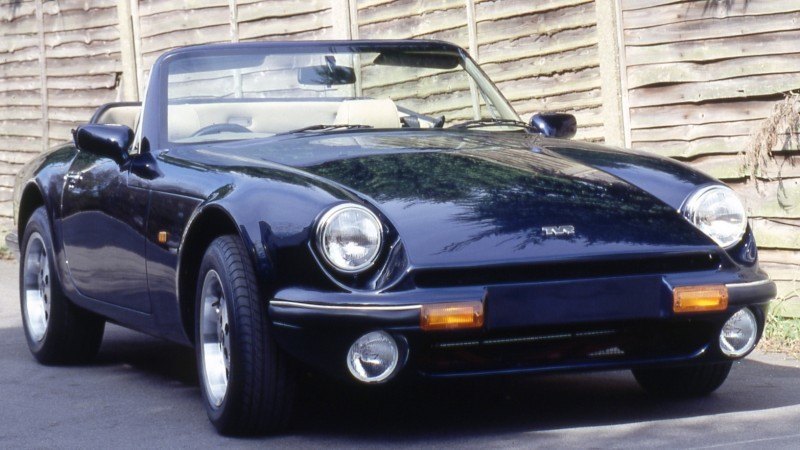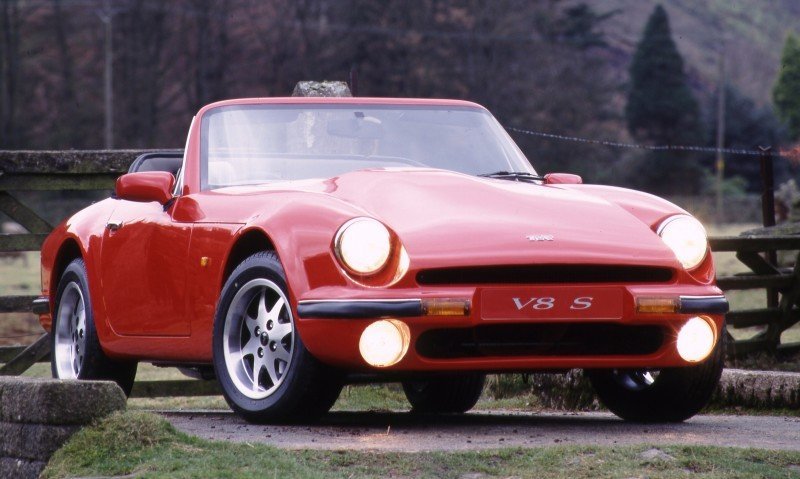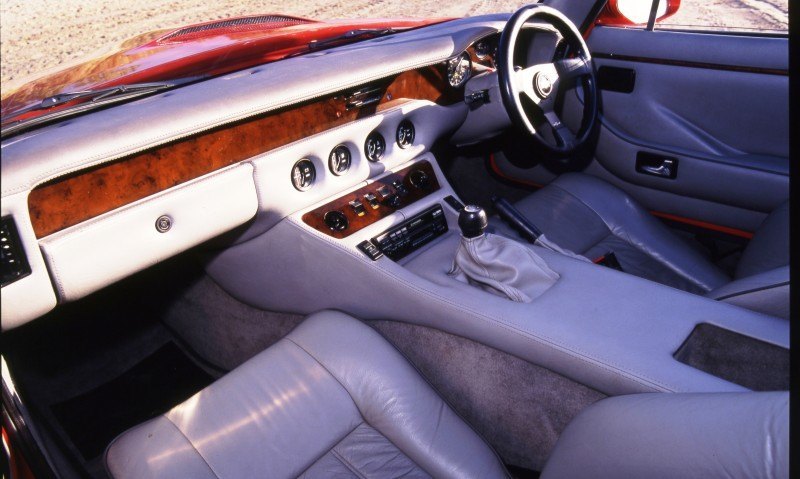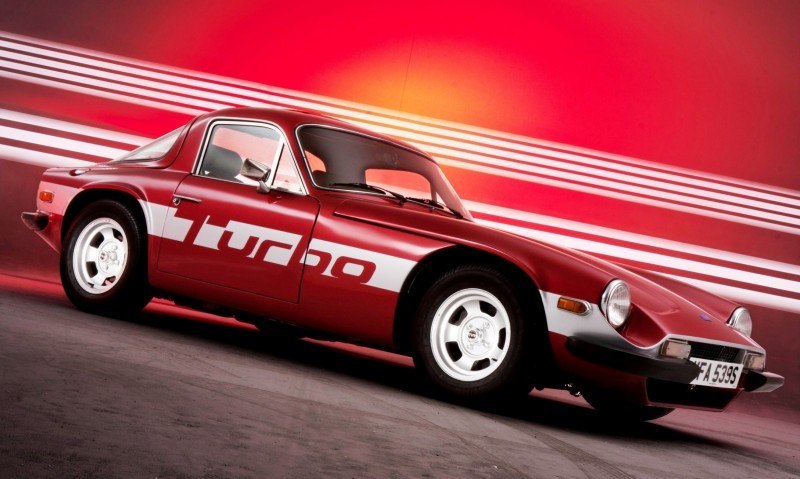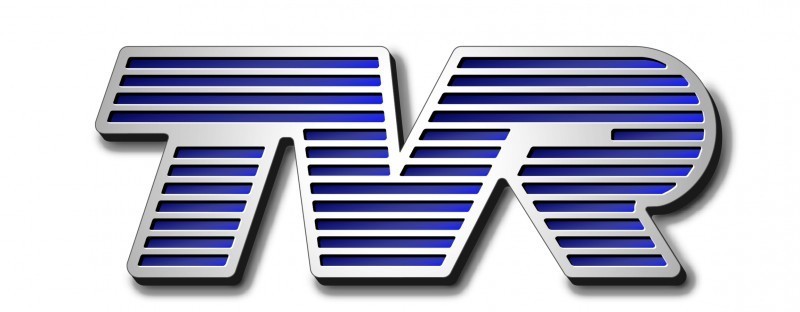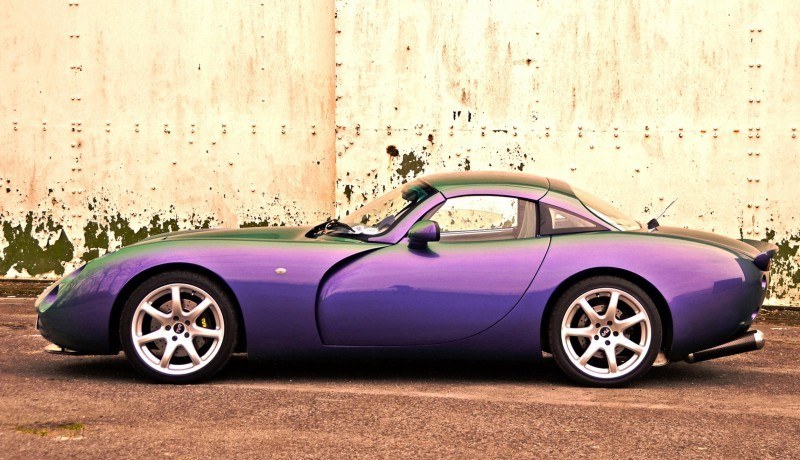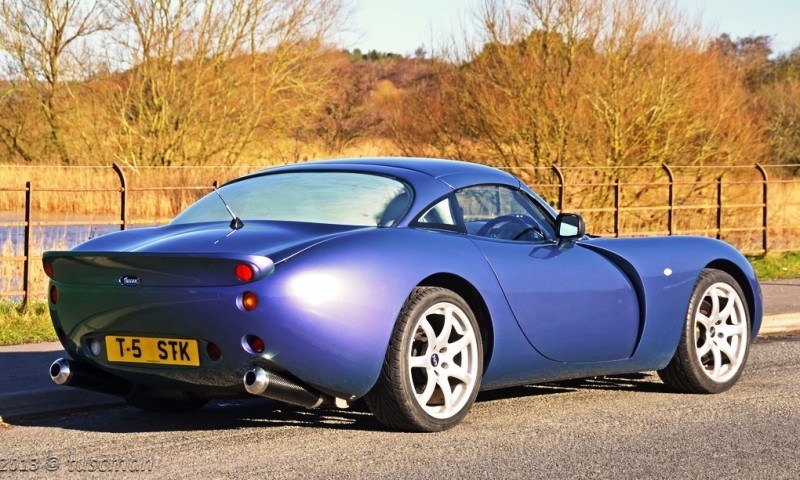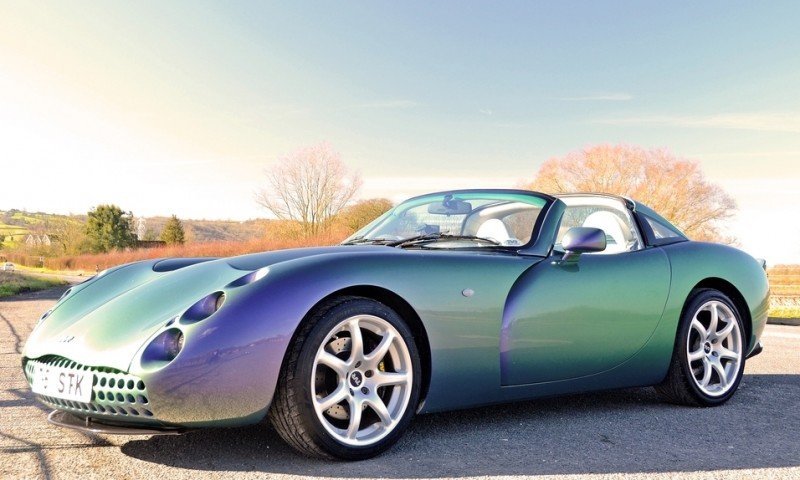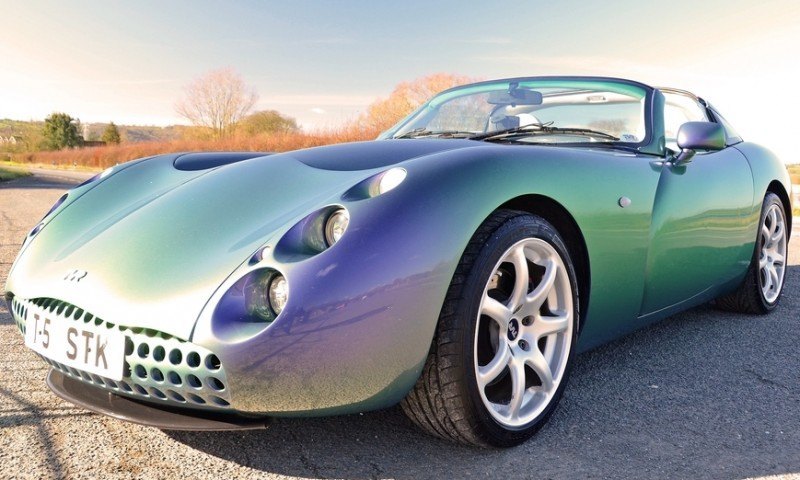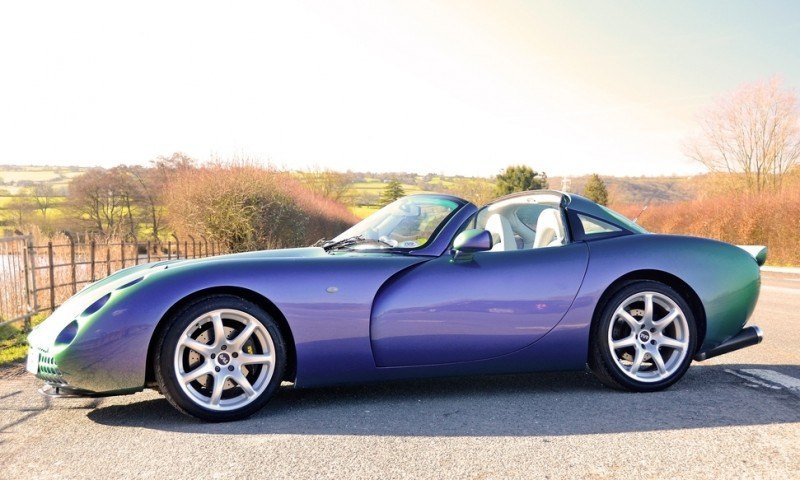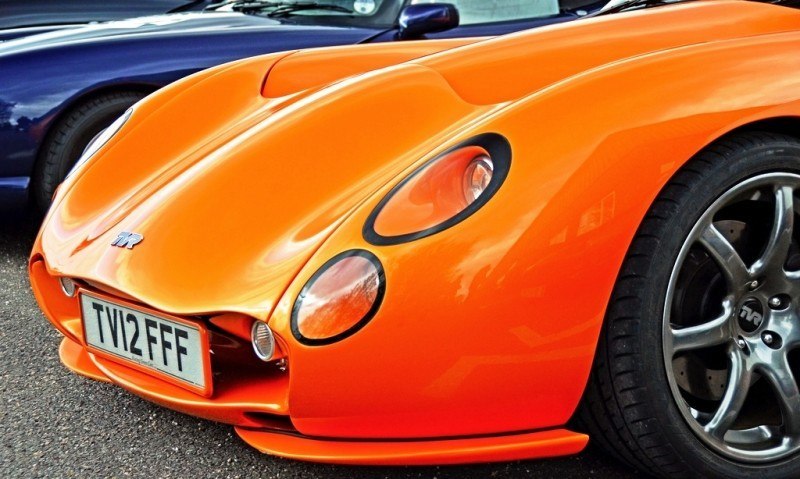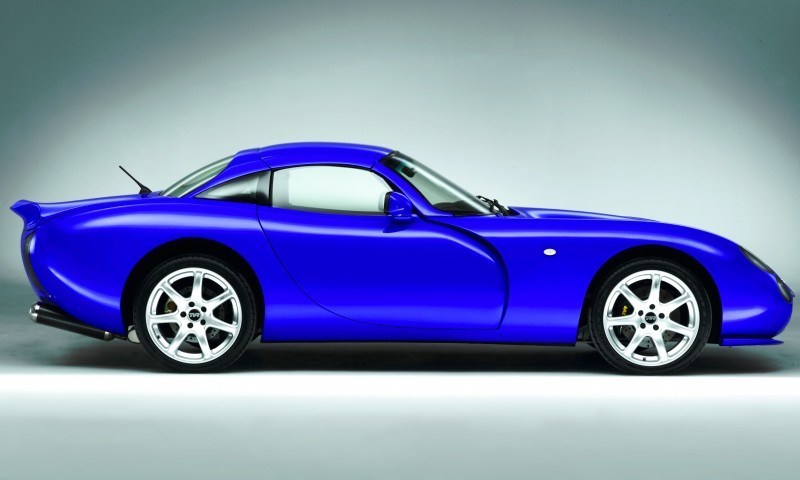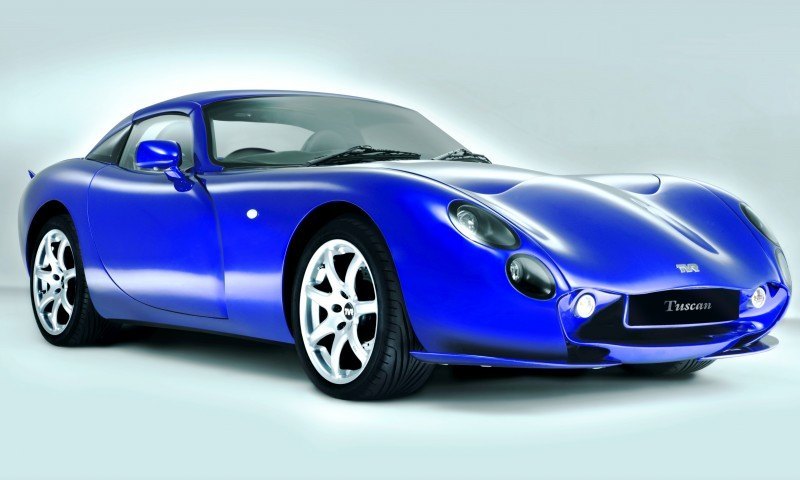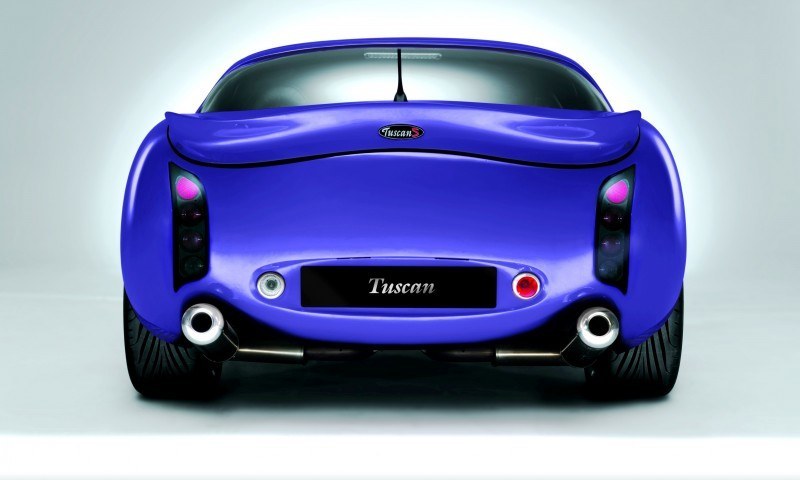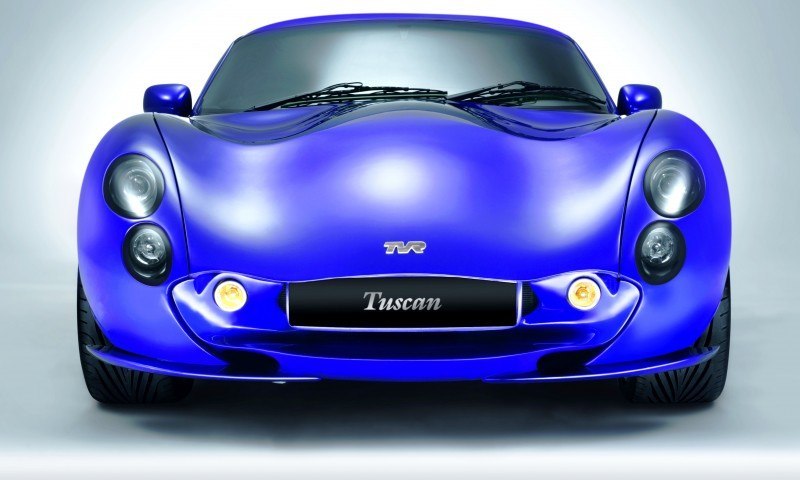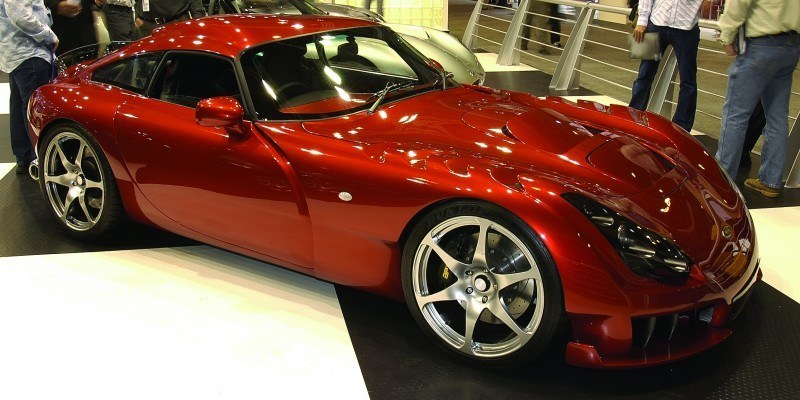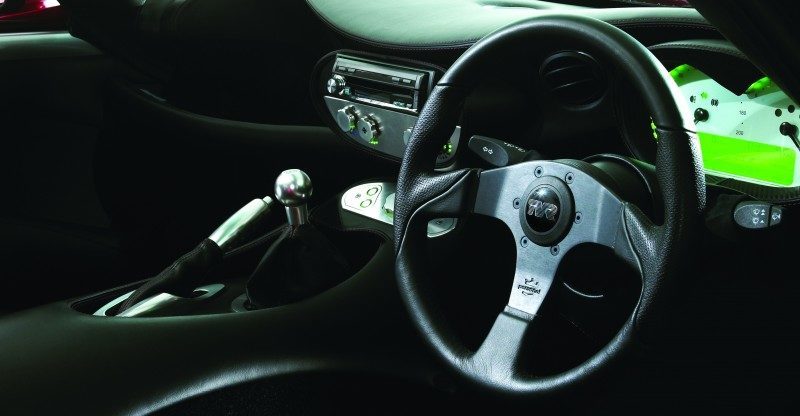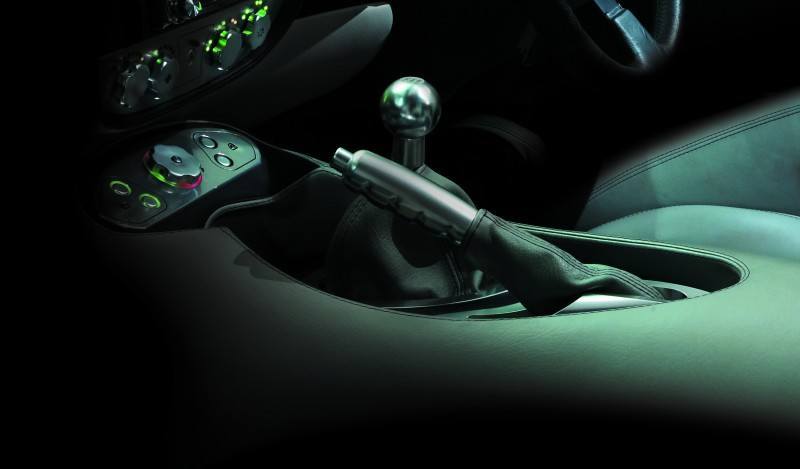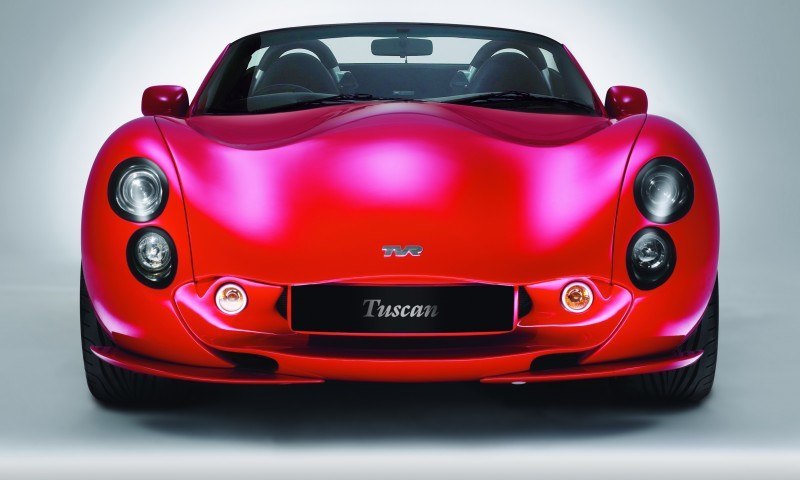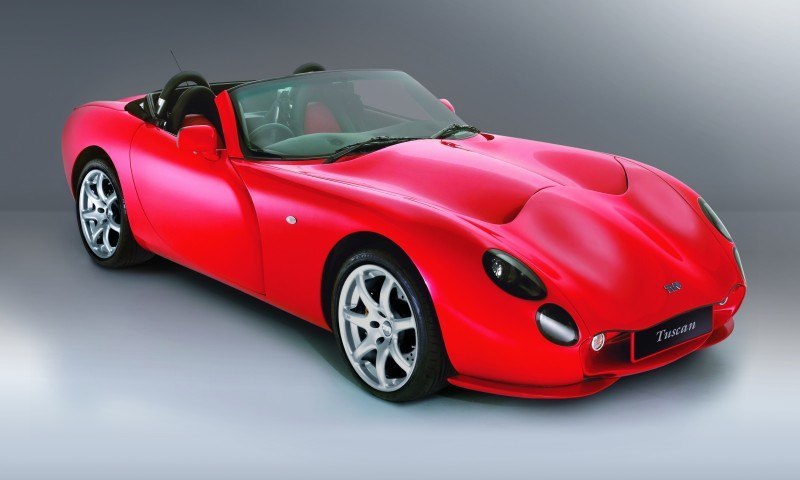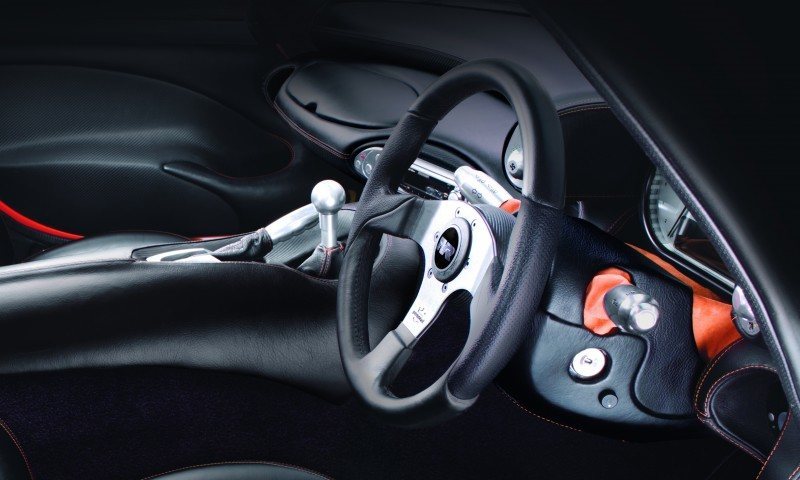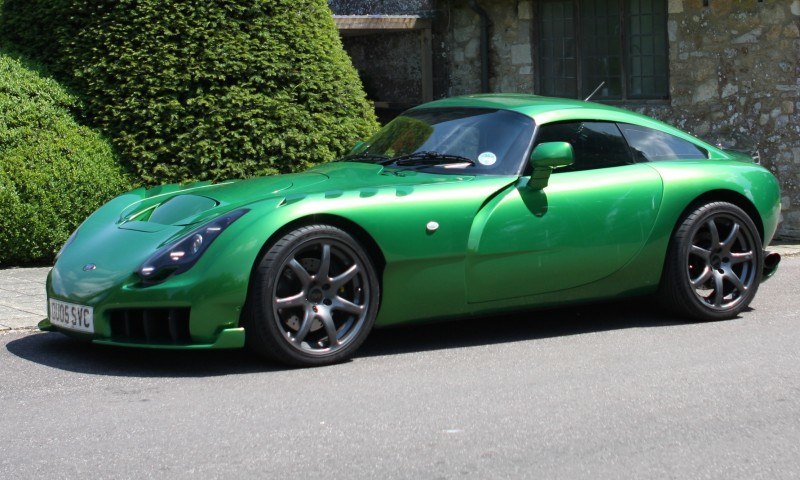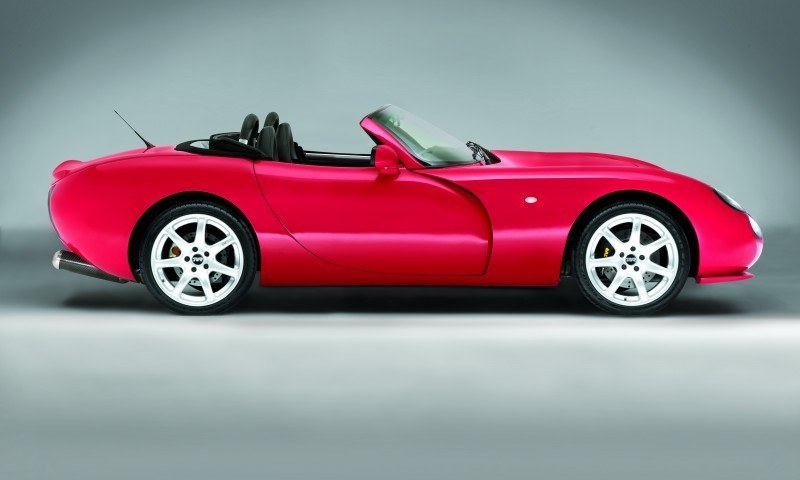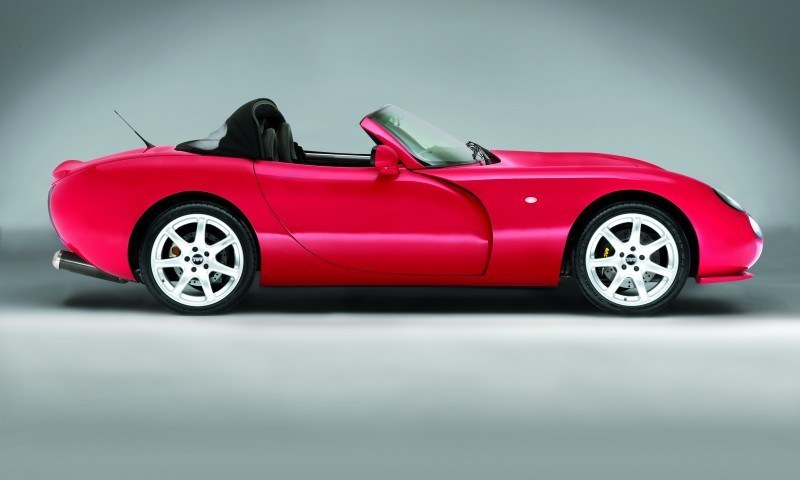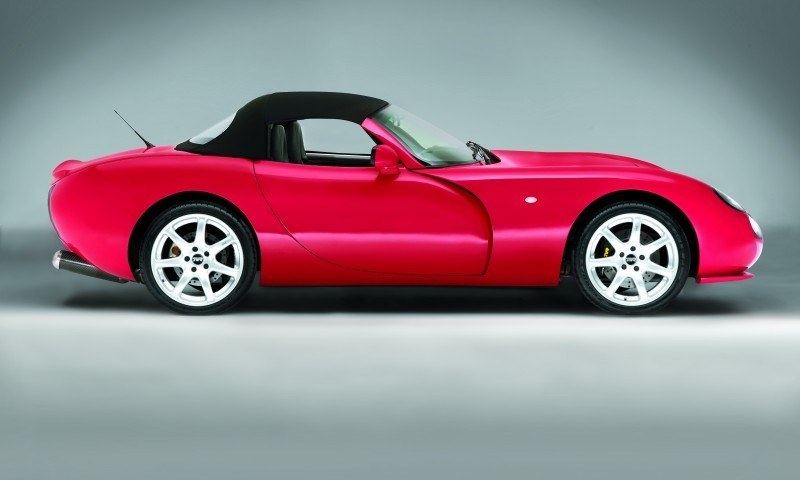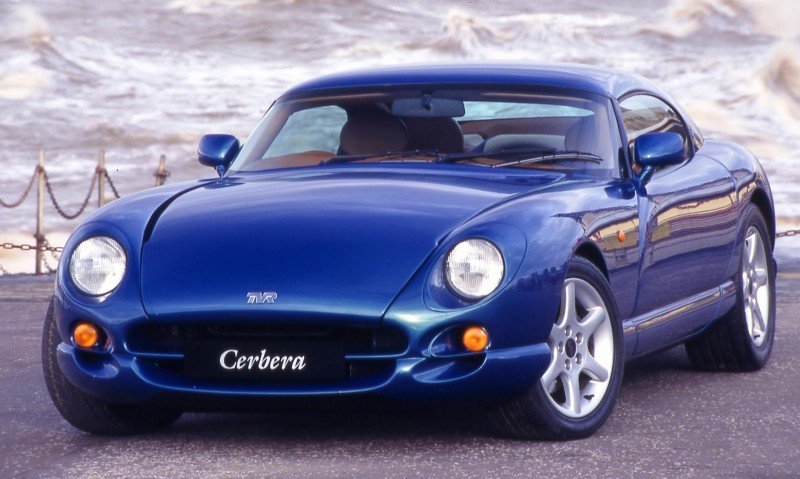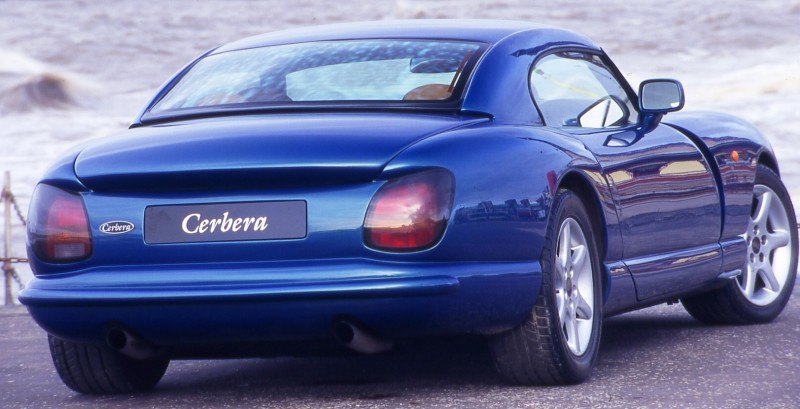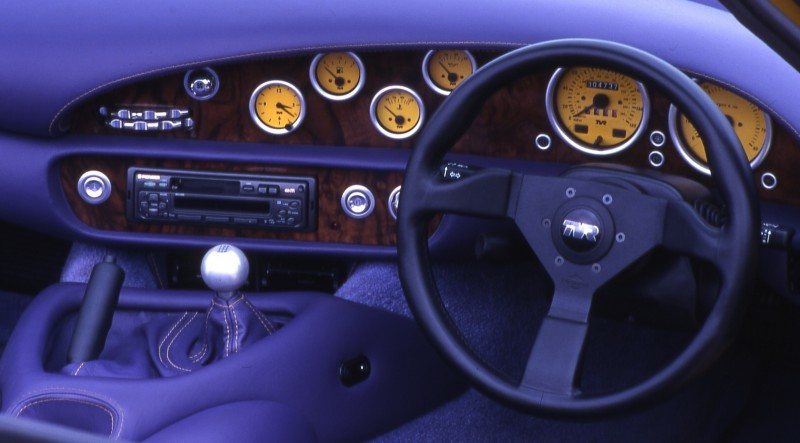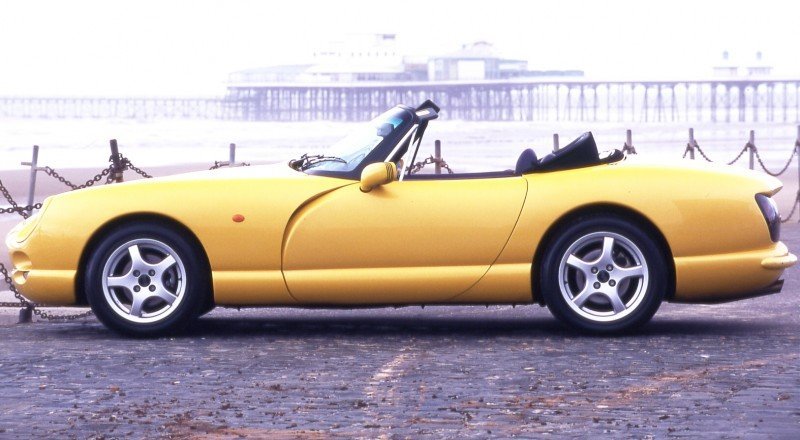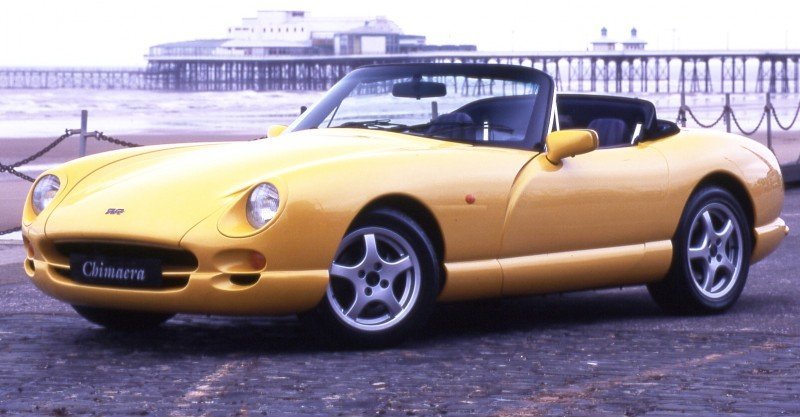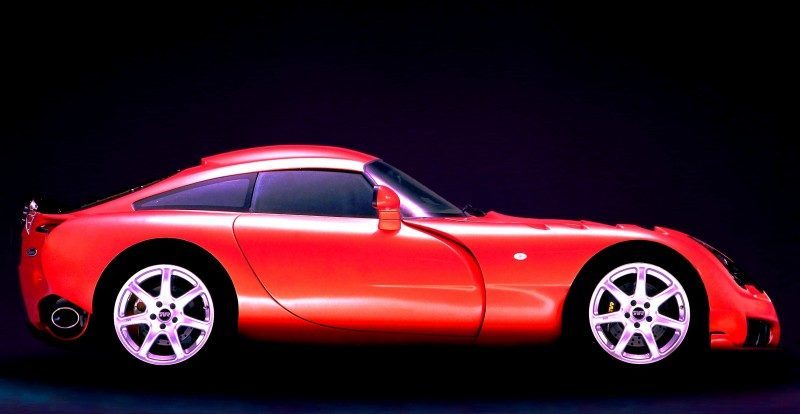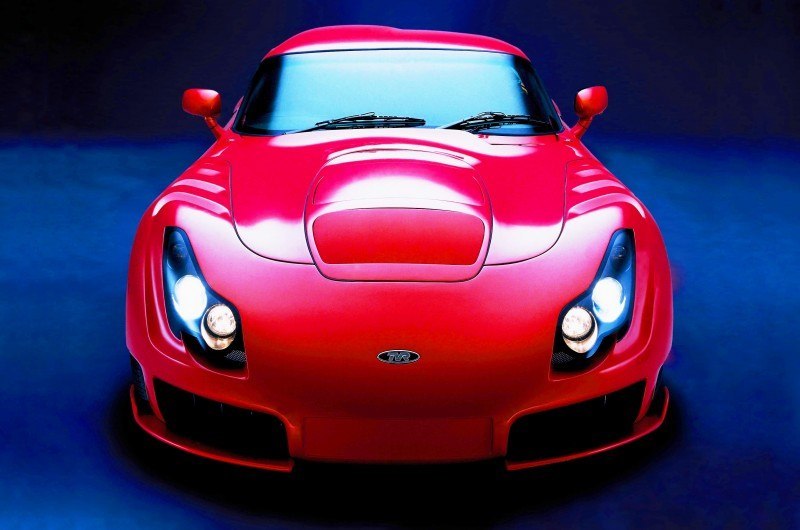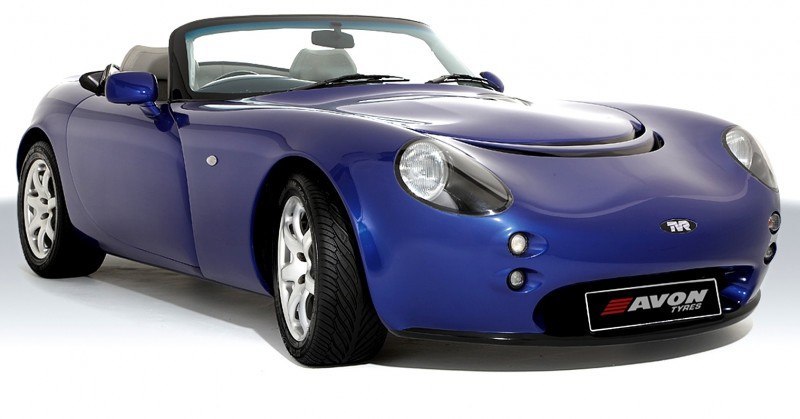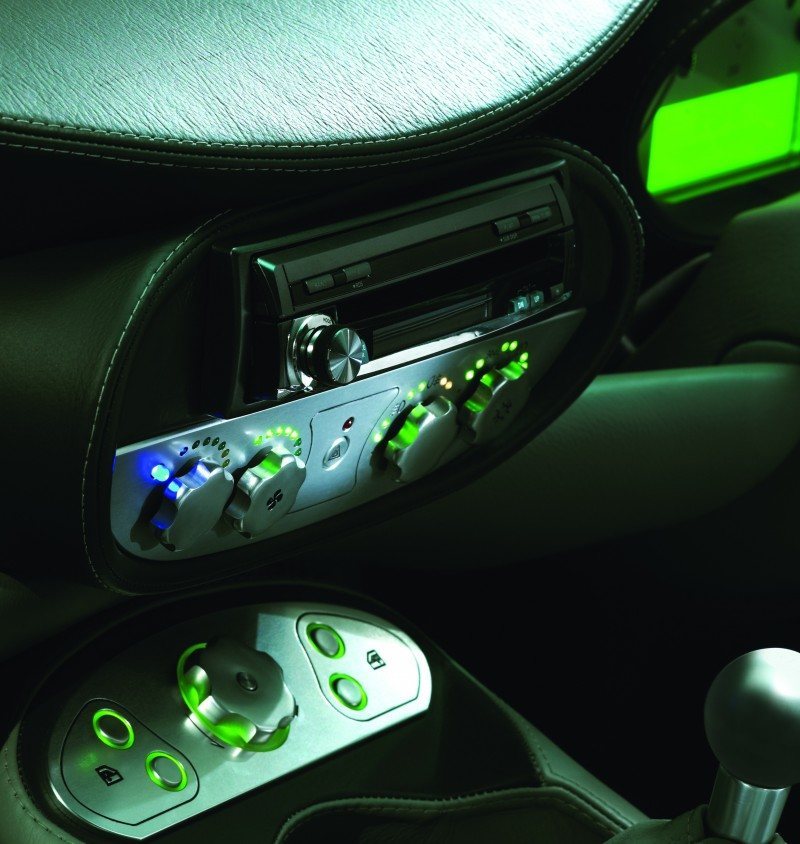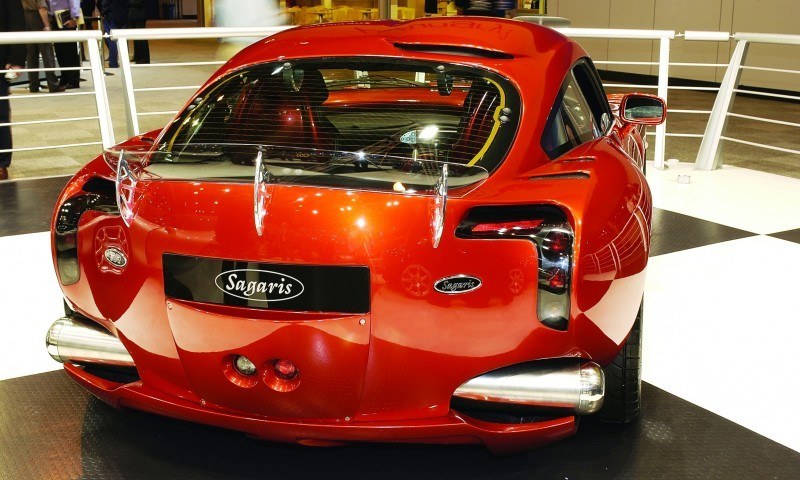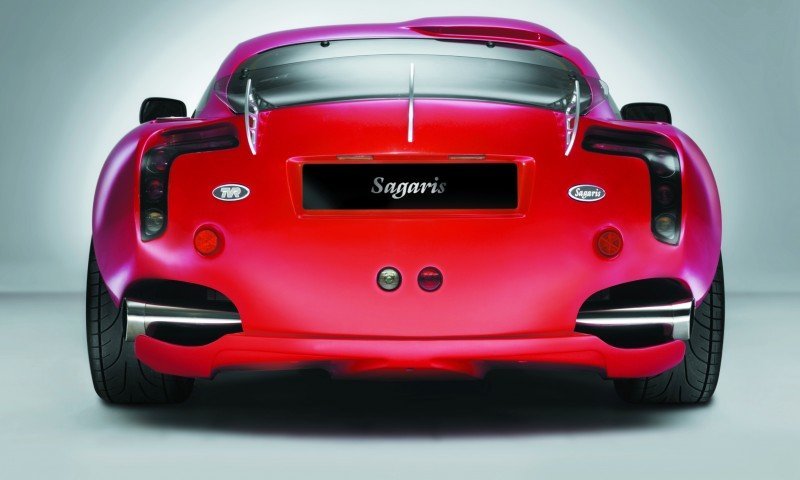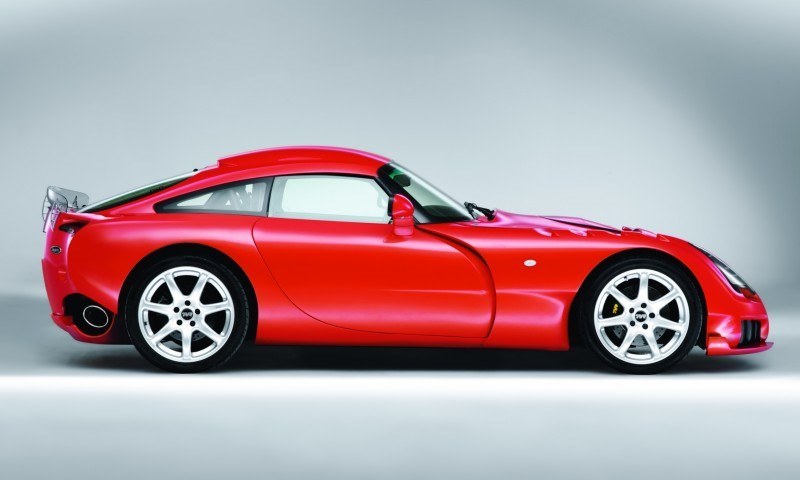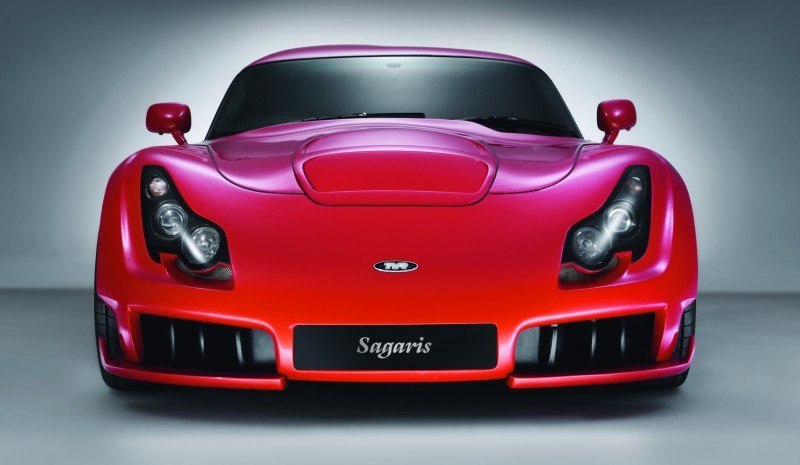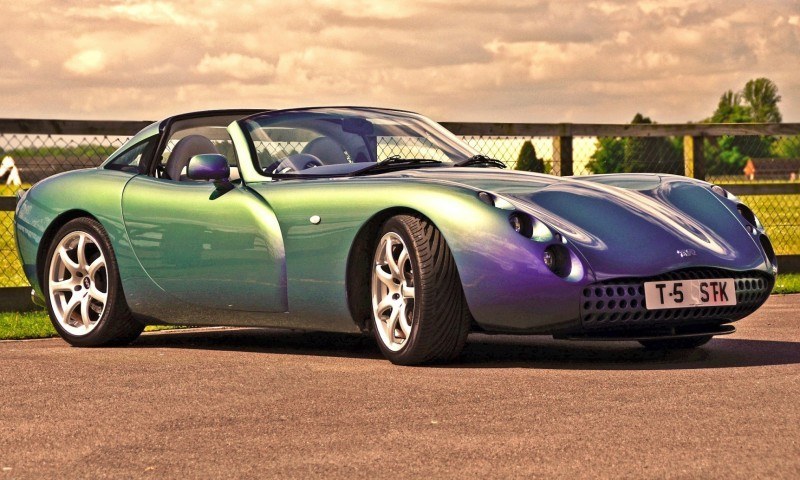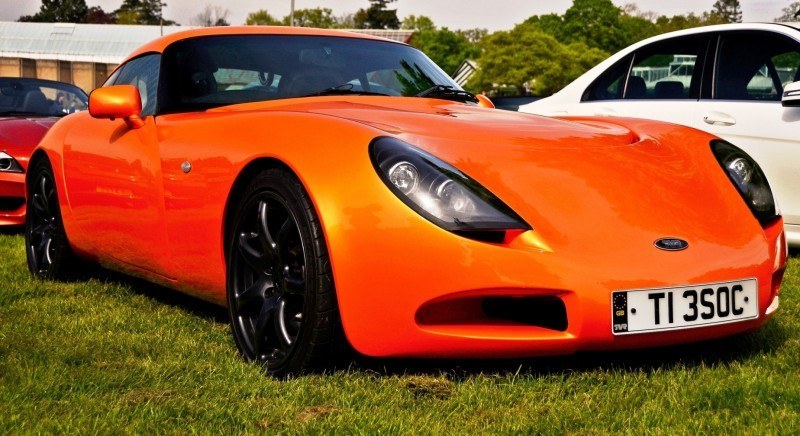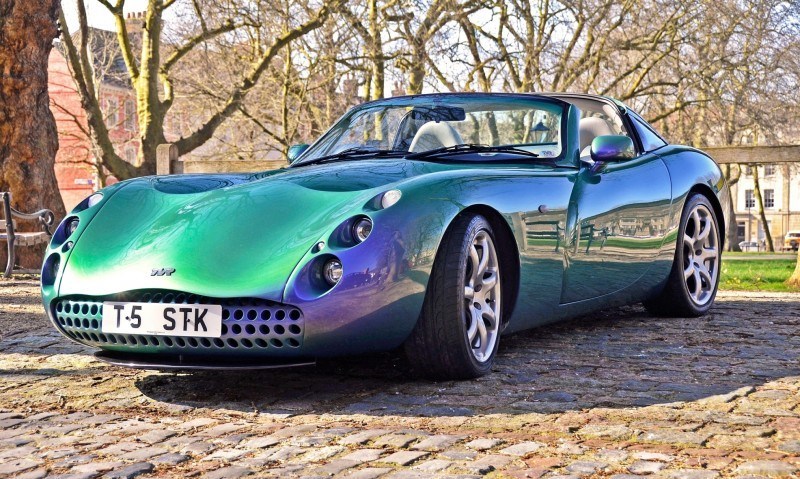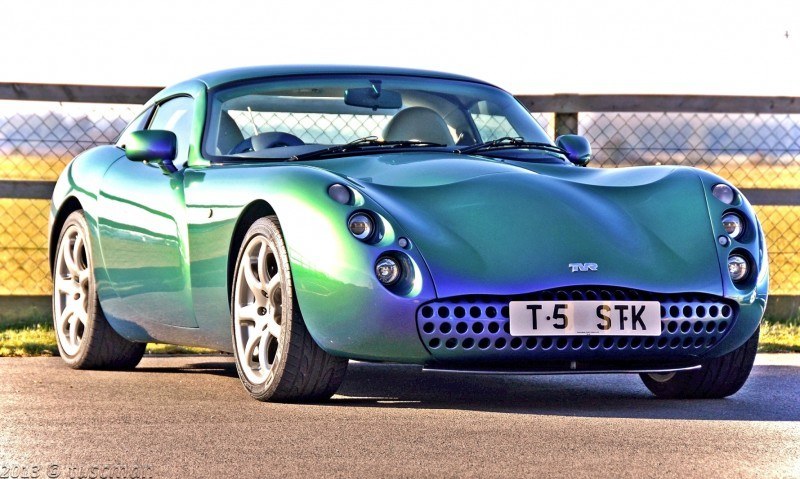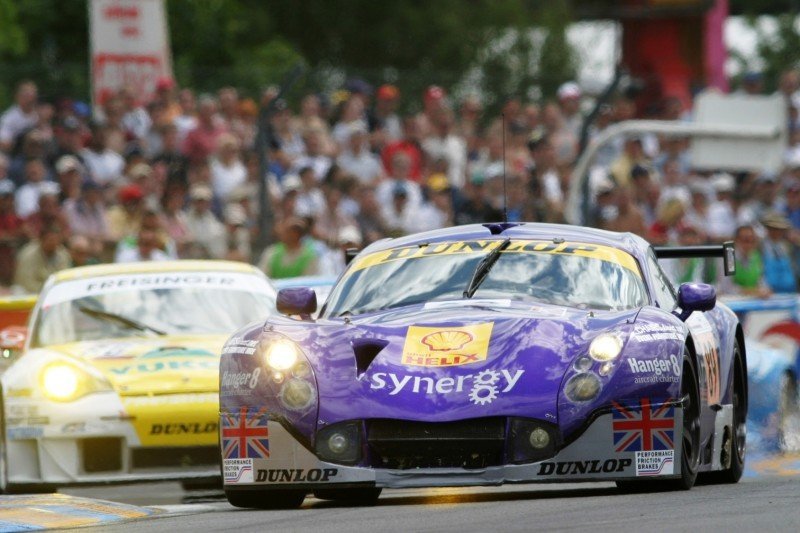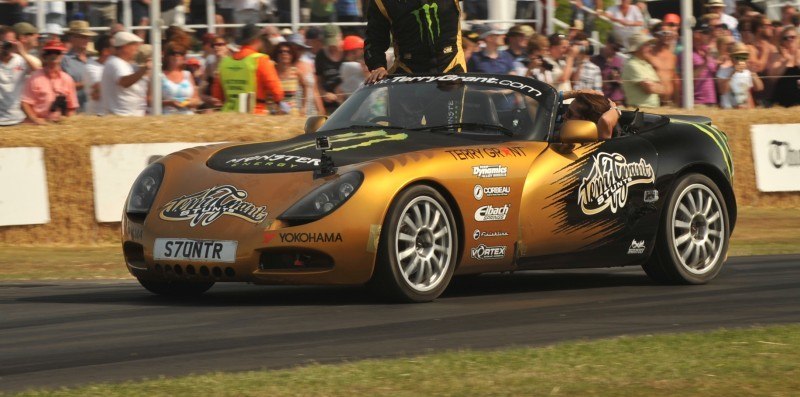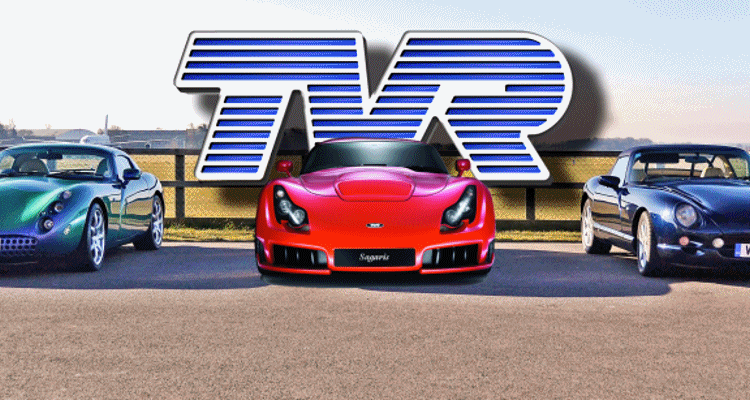If there are two better names than Gordon Murray and Cosworth to attach to the TVR rebirth, we cannot imagine them. All are icons of English performance — and together promise great things.
A new sportscar announcement today includes no new sketches or even outlines of the upcoming new TVR, but it does signal work behind the scenes. The car will be designed and produced using iStream from GMD and engine mechanicals via Cosworth.
iStream is intended to be a highly robotized assembly system using the latest in 3D printing and materials to give low-weight and high-strength components. The iStream designs so far have been tiny urban runabouts – but there is no reason a front-engine supercar could not be made using the same methods.
An engine from the Cosworth stable could be anything from a racing V8 to a Subaru-based boxer turbo — both exciting prospects for the new TVR.
The official announcement is below, plus a previous chronology of the TVR make.
TVR to return to production with stunning new car designed in collaboration with Gordon Murray Design
- Revered British sports car brand, TVR, is roaring back to production with an incredible all-new Cosworth powered sports car, engineered in collaboration with F1 and road car design legend, Gordon Murray
- TVR has developed a product and launch programme that will see at least four new models brought to market over the next ten years
- Positioning and pricing set to be consistent with TVR’s past market positioning and highly competitive within its segment
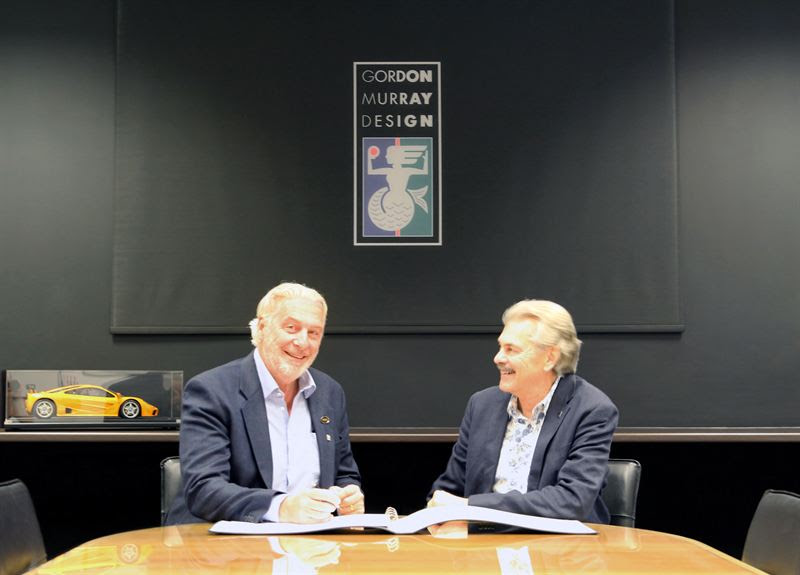
3rd June 2015: The iconic British car brand, TVR, has today announced that it will return to the market with an all-new British designed and built sports car. The company, which boasts an outstanding new management team, has developed the new car in collaboration with Gordon Murray Design and Cosworth, each providing much of the core design and engineering capability for the all-new TVR. This incredible project is already well advanced with over a year of development completed so far.
TVR will issue more specification details and early images later in 2015, but the car will continue the tradition of a classic British two-seat sports car with a composite ground effect aero chassis and body package using Gordon Murray Design’s innovative iStream® technology. Enthusiasts will also be delighted to know that the car will feature the traditional TVR DNA of a front engine with rear wheel drive and a manual transmission, powered by a normally aspirated, dry-sumped, V8 engine, developed and engineered by Cosworth.
Les Edgar, Chairman of TVR said: “We know that a new TVR has to be better than just good – it has to be outstanding. From the outset we only wanted to work with the best partners in the business, and both Gordon Murray’s and Cosworth’s track records within motor sport and high performance car design and engineering speaks for themselves. Gordon Murray Design and Cosworth are the perfect partners for TVR and together, we will deliver a truly exceptional new car.”
Production of the car will begin in 2017, and will be offered to the market at a competitive price point within its segment and consistent with TVR’s positioning in the past. TVR has prioritised the company’s position as an all-British institution, and the cars will be completely produced in new UK factory premises.
Gordon Murray, Chairman of Gordon Murray Design comments: “TVR is an iconic brand which has been an important part of British sports car manufacturing for many decades. Its return to manufacturing is an exciting development and the car deserves the best chassis and powertrain that can possibly be delivered. To that end, I am delighted that our company is involved with the project, and that TVR are using our iStream® technology.”
Bruce Wood, Cosworth Technical Director, said: “We are proud to see Cosworth’s industry-leading engineering at the heart of the revived TVR brand. Our team has been working closely with TVR and Gordon Murray Design to develop a powertrain solution that perfectly complements the exceptional performance characteristics of the new car. It’s an exciting project and one which well suits Cosworth’s engineering expertise.”
Edgar continues: “We are a well-funded, well-supported organisation and boast a vastly experienced management team. We are here to stay and we have a fully evolved ten year plan for product and business development, and are committed to deliver on all the targets we have set ourselves – as we have done to date.
“Despite very deliberately maintaining a low profile since completing the acquisition of TVR two years ago, we have had an enormous amount of unsolicited interest from businesses, individuals and investors internationally. Such is the strength of the brand and the passion of its followers. It is a real privilege to be a part of the revival of a great British marque – one that will succeed through our single-minded desire to produce exceptional sports cars.”
-Ends-

EDITOR’S NOTES
- TVR is an independent British sports car manufacturer established in 1947 by Trevor Wilkinson. The business established itself as a leading light in the British low-volume sports car market, building an international reputation for high-performance vehicles and innovative design. The current management team acquired the brand in 2013.
- Gordon Murray Design Limited is a British company operating from Shalford in Surrey. The Company is recognised as a world leader in automotive design and reverses the current industry trend for sub-contracting by having a complete in-house capability for design, prototyping and development. The Company is compact and focused and undertakes automotive and other engineering programmes in an efficient and innovative way. For more information please visit www.gordonmurraydesign.com.
- Cosworth Group employs its motorsport-inspired engineering and manufacturing capabilities to improve vehicle and driver performance. The group supplies electronics and powertrain products and engineering services to high performance vehicle manufacturers, motorsport teams and performance enthusiasts around the world. Cosworth was founded in 1958. With headquarters in Northampton, UK, the group has a globally-recognised brand and employs staff across Europe and the USA.
- The iStream® assembly process is a complete rethink and redesign of the traditional automotive manufacturing process and could potentially be the biggest revolution in high volume manufacture since the Model T. Development of the process began over 15 years ago and it has already won the prestigious ‘Idea of the Year’ award from Autocar who were given privileged access in order to make their assessment. The simplified assembly process means that the manufacturing plant can be designed to be 20% of the size of a conventional factory. This could reduce capital investment in the assembly plant by approximately 80%. Yet the flexibility of this assembly process means that the same factory could be used to manufacture different variants. The iStream® design process is a complete re-think on high volume materials, as well as the manufacturing process and will lead to a significant reduction in full lifecycle CO2. For more information please visit www.gordonmurraydesign.com.
For more information on TVR, visit: www.tvr.co.uk
ORIGINAL
TVR is one of the greatest success stories in British sports cars. Not by sales or commercial volume, mind you, but the global popularity of TVR is evidence of:
— universal appeal of low-volume sportscars with character
— broad appeal of English-language auto journalism with a highly qualitative edge
— global appetite for automotive and supercar-themed entertainment content
— the power of visceral appeal to an exotic car that is nothing like anything sold locally or by big OEM makes
As an American who has lusted after TVR’s since first glimpsing the Tuscan in the pages of BBC’s TopGear magazine in the 1990s, this passion crossing oceans and cultures should be pretty self-evident.
Of all the cottage-industry sports car brands, few have had as lasting a hold on the collective car-guy consciousness as TVR. The fiberglass wondercars are not something I have driven, nor even seen in the flesh. But the alien panels, otherworldly cabin designs, and carefree engineering is wholly appealing. These were cars that, for all intents and purposes, were not rigorously engineered. Cars like Morgan would have made if they chose evolution versus freezing their best moment in the Plus 4, and riding it to eternity.
Granted, evolution and new sportscars on a five to ten-year model cycle has been a killer task for many other brands just like TVR. Lotus comes to mind. Caterham, altertively, froze some of Lotus’s best DNA and has been riding it to consistent profit of Seven sportscar sales for the last 50 years.
Lotus found that critical magic formula again with the Esprit, and rode it for 30 years — loathe to give up a winning recipe for the second time.
TVR sales volume came at low prices for buyers. Nowhere else could you hop into a supercar-fast exotic car for the equivalent price of a V8 BMW 5-series. Even the pinnacle machines, like the Tuscan and the Sagaris at the end, only carried pricing of about $80,000 pounds. So, let’s think of that as $130,000 in US currency. In today’s cash – that is huge value. A 2014 Lotus Exige LF1 edition in the USA is priced at approximately $85,000, for comparison.
The TVR legacy burns brightly in the UK especially, where no reliability woes can silence the bellow of a straight-six from Blackpool.
Repurchased rights to the IP (designs, engines, construction) and brand rights in 2013 have not let led to a new sportscar or even production of the existing line-up.
Regretfully, the UK’s relaxed sports-car road laws are part of what allowed TVR to thrive for as long as it did. Emission, crash and most electronics requirements are waived for small-volume sports cars like the TVR and countless other brands. A conscious effort to keep this much-loved industry alive and thriving.
The retro-grade rules also put a glass dome over much global sales ambition, however. Why innovate to pass US rules when you can keep selling in the UK with no rules?
This also stymies most take-over ideas, or a willingness to partner with a large global brand that has the resources to take a car global. Caterham was too backward to collaborate well with Renault, and Morgan is only selling Three-Wheelers in the USA now. Rules have killed its other models.
But guess what: they sell a boat-load of Three-Wheelers, and it is keeping the firm afloat.
Perhaps the Caterham/Superformance distribution model is the best way forward for TVR. Ship the cars without an engine so they can have single-type Fed approval, then have a creative seller add a big Chevy V8.
Win, win.
Or triple-win if Superformance were to buy a truck-load of BMW turbo straight-sixes to drop in…
Explore the history of TVR below via high-res official press photography, combined with the loving car photos of TVR’s many adoring owners.
Very gracious photo credits to:
http://tuscman.picturepush.com/
The Four Eras of TVR History, So Far.
| Model | Production Years | Engine | Displacement | Production figures[21] |
| Trevor Wilkinson Era[22] | ||||
| Jomar1 | 1956–1959 | Coventry Climax | 1098 cc | |
| Ford 100E Sidevalve | 1172 cc | |||
| TVR Open Sports / Coupe | 1956–1957 | Coventry Climax | 1098 cc | |
| Ford 100E Sidevalve | 1172 cc | |||
| BMC B-Series | 1489 cc | |||
| TVR Grantura I | 1958–1960 | Coventry Climax FWA | 1098 cc | 100 |
| Coventry Climax FWE | 1216 cc | |||
| Ford 100E Sidevalve | 1172 cc | |||
| BMC B-Series | 1489 cc | |||
| TVR Grantura II | 1960–1961 | Coventry Climax FWE | 1216 cc | 400 |
| Ford Kent 105E | 997 cc | |||
| BMC B-Series | 1489 cc | |||
| BMC B-Series | 1588 cc | |||
| TVR Grantura IIa | 1961–1962 | Coventry Climax FWE | 1216 cc | |
| Ford Kent 105E | 997 cc | |||
| Ford Kent 109E | 1340 cc | |||
| BMC B-Series | 1588 cc | |||
| BMC B-Series | 1622 cc | |||
| TVR Grantura III | 1962–1963 | BMC B-Series | 1622 cc | 90 |
| TVR Grantura III 1800 | 1963–1965 | BMC B-Series | 1798 cc | |
| TVR Grantura 1800S | 1964–1966 | BMC B-Series | 1798 cc | 90 |
| TVR Trident | 1965 | Ford Windsor V8 | 4727 cc | |
| TVR Griffith 2001 | 1963–1964 | Ford Windsor V8 | 4727 cc | 300 |
| TVR Griffith 4001 | 1964–1967 | Ford Windsor V8 | 4727 cc |
| Martin Lilley Era | ||||
| TVR Grantura IV 1800S | 1966–1967 | BMC B-Series | 1798 cc | 90 |
| TVR Tuscan V8 | 1967–1970 | Ford Windsor V8 | 4727 cc | 28 V8 and 27 V8SE |
| TVR Tuscan V6 | 1969–1971 | Ford Essex V6 | 2994 cc | 101 |
| TVR Vixen S2 | 1968–1969 | Ford Kent | 1599 cc | 438 |
| TVR Vixen S3 | 1970–1972 | Ford Kent | 1599 cc | 168 |
| TVR Vixen 1300 | 1971–1972 | Triumph I4 | 1296 cc | 15 |
| TVR Vixen 2500 | 1971–1972 | Triumph I6 | 2498 cc | 385 |
| TVR Vixen S4 | 1972 | Ford Kent | 1599 cc | 23 |
| TVR 1600M | 1972–1973 | Ford Kent I4 | 1599 cc | 148 |
| 1975–1977 | ||||
| TVR 2500M | 1972–1977 | Triumph I6 | 2498 cc | 947 |
| TVR 3000M | 1971–1979 | Ford Essex V6 | 2994 cc | 654 |
| TVR 3000M Turbo | 1975–1979 | Ford Essex V6 | 2994 cc | 20 |
| TVR Taimar | 1976–1979 | Ford Essex V6 | 2994 cc | 395 and 258 convertible |
| TVR Taimar Turbo | 1976–1979 | Ford Essex V6 | 2994 cc | 30 and 13 convertible |
| TVR 3000S | 1978–1979 | Ford Essex V6 | 2994 cc | |
| TVR 3000S Turbo | 1978–1979 | Ford Essex V6 | 2994 cc | |
| TVR Tasmin 200 | 1981–1984 | Ford Pinto I4 | 1993 cc | 16 and 45 convertible |
| TVR Tasmin 280i | 1980–1984 | Ford Cologne V6 | 2792 cc | 118 and 862 convertible |
| Peter Wheeler Era | |||||
| TVR 280i | 1984–1987 | Ford Cologne V6 | 2792 cc | ||
| TVR 350i | 1983–1989 | TVR/Rover V8 | 3528 cc | 52 and 897 convertible | |
| TVR 350SX | 1985–1989 | TVR/Rover V8 | 3528 cc | ||
| + Sprintex Supercharger | |||||
| TVR 400SX | 1989 | TVR/Rover V8 | 3948 cc | ||
| + Sprintex Supercharger | |||||
| TVR 350SE | 1990–1991 | TVR/Rover V8 | 3947 cc | 25 | |
| TVR 390SE | 1984–1988 | TVR/Rover V8 | 3905 cc | ||
| TVR 400SE | 1988–1991 | TVR/Rover V8 | 3948 cc | 242 convertible | |
| TVR 420SE | 1986–1987 | TVR/Rover V8 | 4228 cc | ||
| TVR 450SE | 1989–1990 | TVR/Rover V8 | 4441 cc | 45 convertible | |
| TVR 420SEAC | 1986–1988 | TVR/Rover V8 | 4228 cc | 37 | |
| TVR 450SEAC | 1988–1989 | TVR/Rover V8 | 4441 cc | 18 | |
| TVR S | 1986–1988 | Ford Cologne V6 | 2792 cc | 605 | |
| TVR S2 | 1989–1990 | Ford Cologne V6 | 2933 cc | 668 | |
| TVR S3(C) | 1991–1992 | Ford Cologne V6 | 2933 cc | 887 | |
| TVR S4C | 1993–1993 | Ford Cologne V6 | 2933 cc | 34 | |
| TVR V8S | 1991–1993 | TVR/Rover V8 | 3948 cc | 34 | |
| TVR Griffith | 1992–2002 | TVR/Rover V8 | 3948 cc | 2304 | |
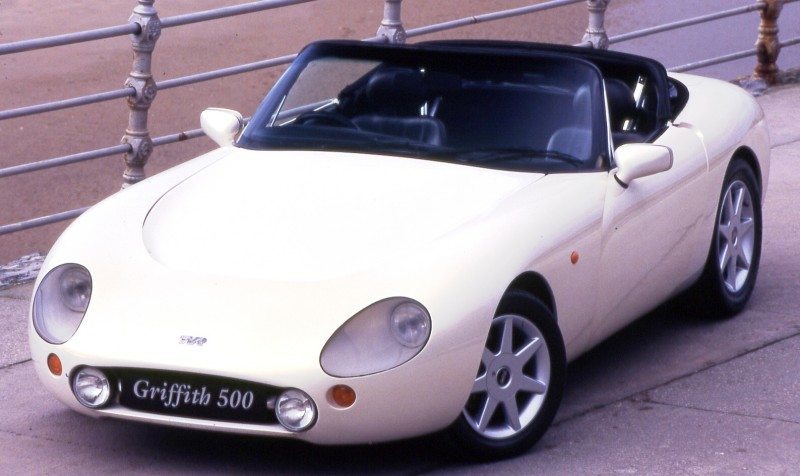 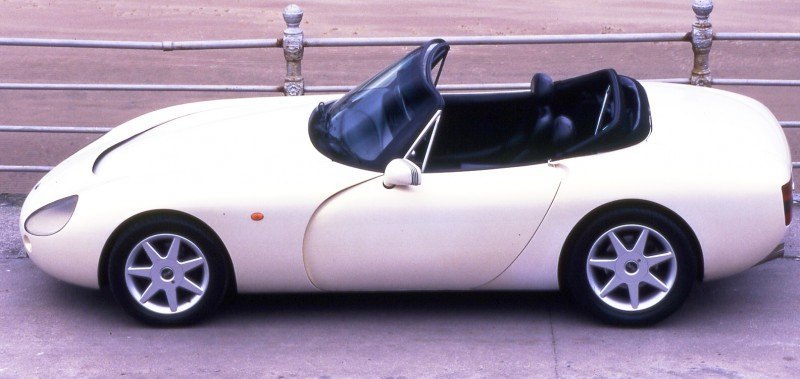 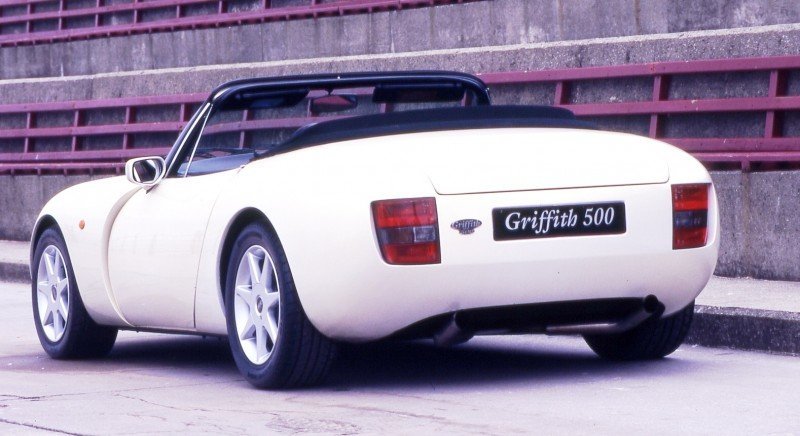   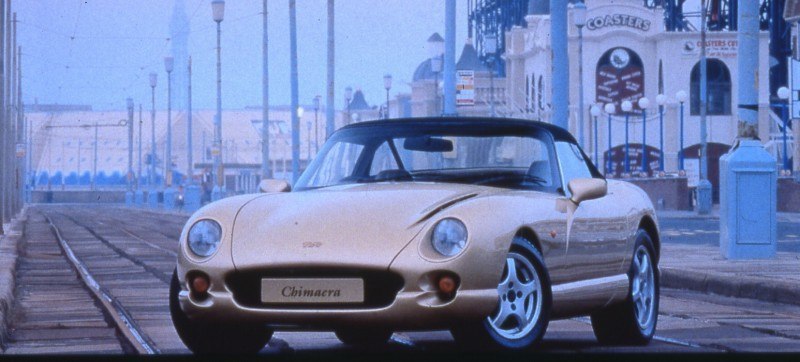 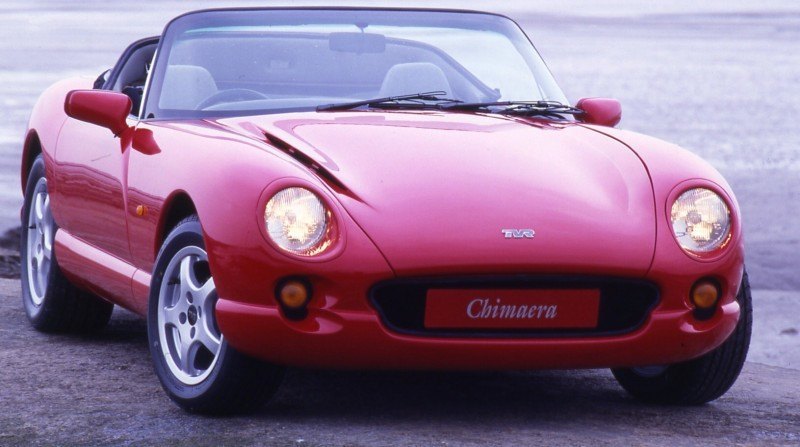 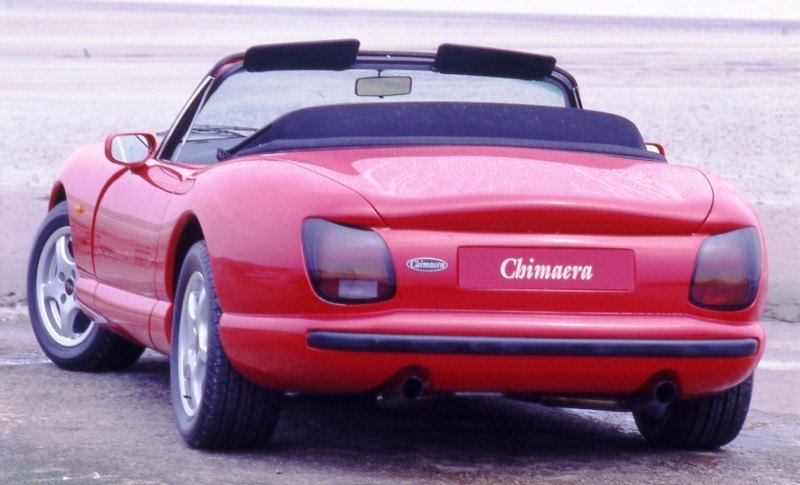 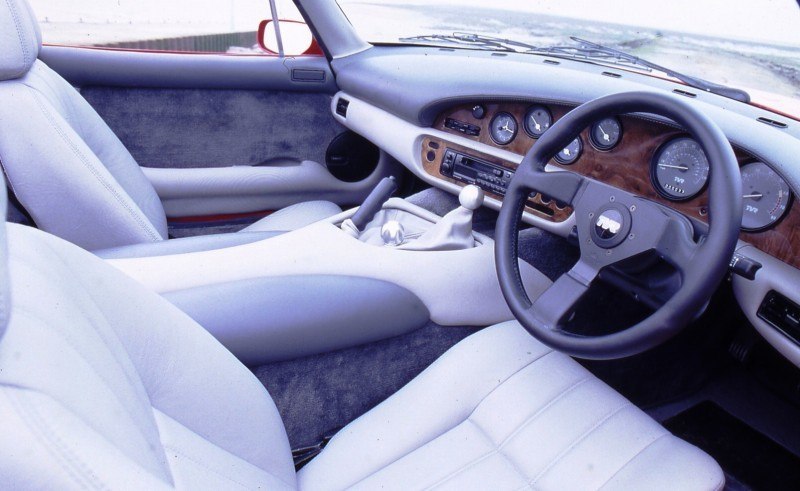 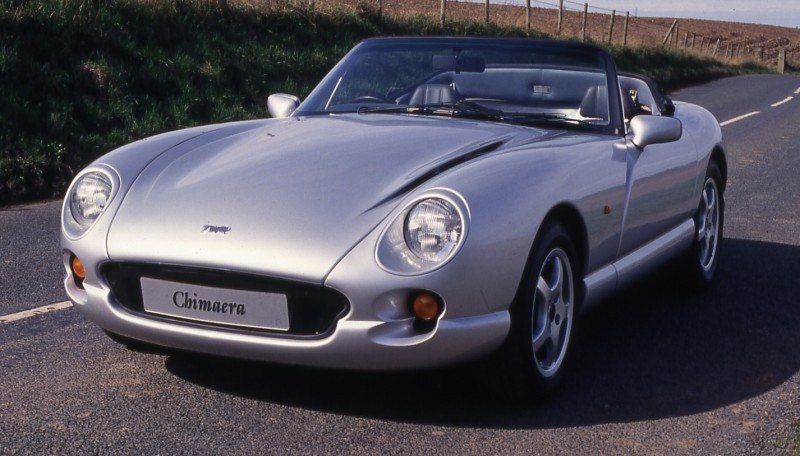 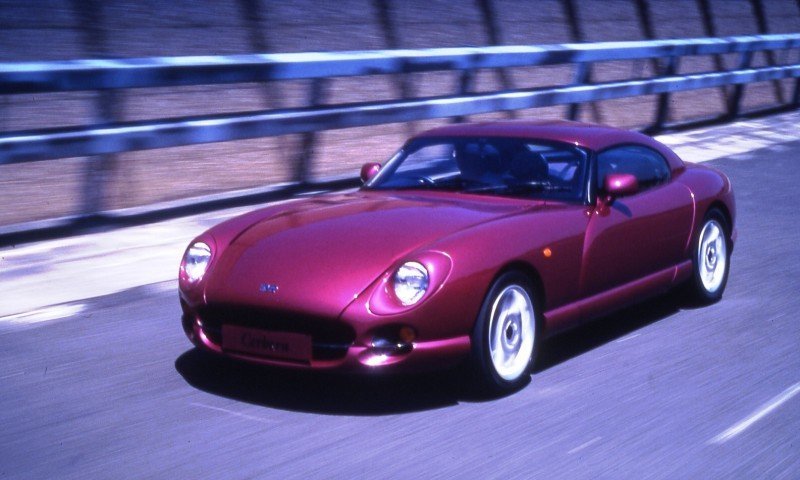 |
4280 cc | ||||
| 4988 cc | |||||
| TVR Chimaera | 1992–2001 | TVR/Rover V8 | 3948 cc | 5256 | |
| 4280 cc | |||||
| 4495 cc | |||||
| 4988 cc | |||||
| TVR Cerbera | 1996–2003 | AJP8 / Speed Eight | 4185 cc | 1490 | |
| 4475 cc | |||||
| 1996–2003 | Speed Six | 3996 cc | |||
| TVR T400 | 2001–2007 | Speed Six | 3996 cc | ||
| TVR Tamora | 2002–2006 | Speed Six | 3605 cc | 356 | |
| TVR T350 (Targa & Coupe) | 2002–2006 | Speed Six | 3605 cc | 460 | |
| TVR Tuscan | 1999–2006 | Speed Six | 3605 cc | 1677 | |
| 3996 cc | |||||
| TVR Sagaris | 2004–2006 | Speed Six | 3996 cc | 211 | |
| TVR Typhon | 2004 | Speed Six | 3996 cc |
| Nikolai Smolenski Era | ||||
| TVR Sagaris | 2004–2006 | Speed Six | 3996 cc | |
| Speciality/Racing Cars | ||||
| TVR Cerbera Speed 122/3 | 1997 | Speed Twelve | 7730 cc | |
| TVR Tuscan Speed 122/3 | TVR Speed Twelve | 7730 cc | ||
| TVR Tuscan Challenge3 | 1989–(around 100 made) | Rover V8/Speed Eight | 4500 cc | |
| TVR T400R/Typhon GT3 | ? | |||
| 1 – Not technically a TVR model; a TVR chassis bodied by Ray Saidel. | ||||
| 2 – Never went into production. | ||||
| 3 – Built exclusively for racing. |

Tom Burkart is the founder and managing editor of Car-Revs-Daily.com, an innovative and rapidly-expanding automotive news magazine.
He holds a Journalism JBA degree from the University of Wisconsin – Madison. Tom currently resides in Charleston, South Carolina with his two amazing dogs, Drake and Tank.
Mr. Burkart is available for all questions and concerns by email Tom(at)car-revs-daily.com.


